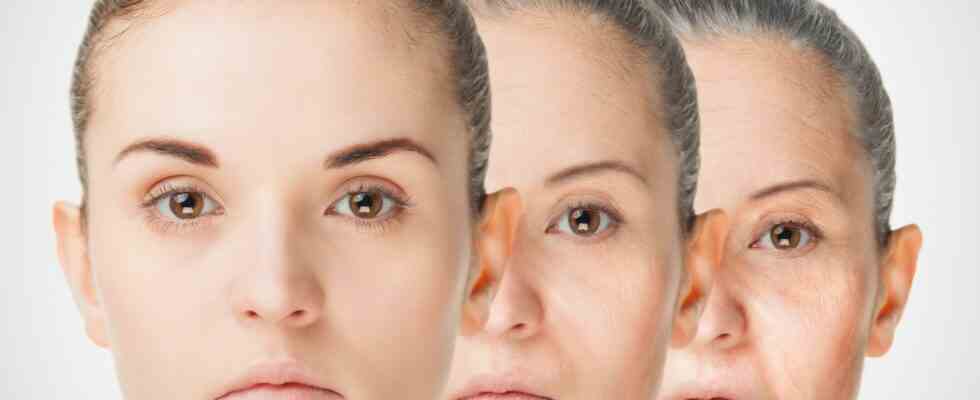Laut einer klinischen Studie mit 55- bis 70-jährigen Frauen kann die Zugabe dieses Nährstoffs zur Ernährung die antioxidativen Abwehrkräfte des Körpers stärken und möglicherweise die Wahrscheinlichkeit verringern, an Diabetes, Bluthochdruck und Herz-Kreislauf-Erkrankungen zu erkranken. Es bedarf jedoch weiterer Forschung, um seine Wirkung zu bestätigen.
Die Aminosäure Taurin könnte der Studie zufolge in Anti-Aging-Therapien eingesetzt werden.
Unsere Zellen produzieren potenziell toxische Nebenprodukte, die als „freie Radikale“ bekannt sind, wenn sie den Sauerstoff, den wir atmen, und die Nahrung, die wir täglich zu uns nehmen, abbauen, um zu existieren. Einige dieser Moleküle erfüllen wichtige biologische Funktionen, aber wenn es zu viele davon gibt, können die inneren Zellstrukturen geschädigt werden, was die Funktionsfähigkeit der Zellen beeinträchtigt und möglicherweise zu chronischen Krankheiten führen kann. Wir bezeichnen diesen Prozess als oxidativen Stress.
Unser Körper verfügt über ein bemerkenswertes Arsenal an antioxidativen Enzymen, die dabei helfen, ein gesundes Gleichgewicht reaktiver Sauerstoffspezies aufrechtzuerhalten, aber mit zunehmendem Alter lassen diese Kontrollmechanismen nach. Eine kürzlich in der Zeitschrift veröffentlichte Studie Ernährung schlägt vor, die Ernährung mit dem Amino zu ergänzen[{” attribute=””>acid taurine could be a realistic approach to address the issue.
The study reported in the study was carried out at the University of São Paulo (USP) in Brazil. It involved 24 female volunteers aged 55 to 70. They were randomly separated into two groups. One group consumed three 500 mg capsules of taurine per day for 16 weeks (1.5 g per day). The other group received pills that simply contained corn starch (placebo). Neither the volunteers nor the researchers were aware of which group each participant belonged to.
Oxidative stress markers were analyzed in blood samples taken before and after the intervention. One of the most intriguing findings was an almost 20% rise in levels of the antioxidant enzyme superoxide dismutase (SOD) in the taurine group, compared to a 3.5% drop in the control group. SOD, the scientists explain, protects cells from the harmful reactions of the superoxide radical.
“Preventing the buildup of free radicals that naturally occurs with aging probably prevents cardiovascular disease, diabetes, and high blood pressure, among other chronic conditions,” said Ellen de Freitas. Freitas is a professor at the Ribeirão Preto School of Physical Education and Sports (EEFERP-USP) and co-principal investigator for a project supported by FAPESP.
According to Freitas, very few studies of the effects of taurine in the context of aging can be found in the scientific literature. “This study was a first step, aimed at investigating the ideal dose and possible side effects, none of which was observed in any of the participants,” she said.
Anti-aging therapy
Taurine is a nutrient found in certain foods, such as fish, shellfish, chicken, turkey, and beef. Additionally, it is naturally produced in some tissues of the human body, particularly the liver, and is important to the functioning of the central nervous system, immunity, eyesight, and fertility.
The Freitas group has been studying taurine’s antioxidant and anti-inflammatory properties for at least 10 years, initially in high-performance athletes and later in obese people, with daily dosages ranging from 3 g to 6 g. “The results showed that oxidative stress in these individuals could be controlled when their diet was supplemented with this amino acid. We then decided to test the strategy in the context of aging. This was very novel, so we began with a very low safety dose,” Freitas said.
The initial plan was to look at the effects of taurine supplementation in conjunction with exercise training, as well as both treatments separately. Physical activity is thought to be one of the main ways to regulate levels of oxidizing substances and antioxidants in the body, and the proper amount is thought to enhance the benefits of taurine. However, because of the pandemic and the fact that the volunteers were in a high-risk group for COVID-19 complications, the researchers chose to solely proceed with the nutritional component of the study, which could be monitored remotely.
Two other markers of oxidative stress were analyzed besides SOD: the antioxidant enzyme glutathione reductase (GR), which decreased significantly in both groups, and malondialdehyde (MDA), which increased 23% in the control group and decreased 4% in the taurine supplementation group.
“These results were modest, but we believe a higher dose of taurine could produce stronger evidence for its benefits,” Freitas said.
For Gabriela Abud, the first author of the article and currently a Ph.D. candidate at the Ribeirão Preto Medical School (FMRP-USP), changes in the volunteers’ diet in the early months of the pandemic owing to lockdown may have affected the results of the biochemical analysis.
“In addition to markers of oxidative stress, we analyzed levels of minerals such as selenium, zinc, magnesium, and calcium, which are important to the functioning of these enzymes,” Abud explained. “Selenium, for example, is a co-factor for glutathione peroxidase [which indirectly helps eliminate hydrogen peroxide from the organism] und war in beiden Gruppen reduziert.“
Für Freitas ist die Taurin-Supplementierung nur das „Sahnehäubchen“ und kann alleine keine Wunder bewirken. „Ein gesunder Lebensstil mit einer ausgewogenen Ernährung und regelmäßiger Bewegung ist grundlegend, damit der Anti-Aging-Effekt eintritt“, sagte sie.
In die nächste Studie plant die Gruppe, übergewichtige Frauen im Alter von 60 bis 75 Jahren mit Sarkopenie einzubeziehen, einem allmählichen Verlust an Muskelmasse, der durch chronische Entzündungen verschlimmert werden kann. „Diese Menschen sind einem akuten Risiko ausgesetzt, Komplikationen zu entwickeln. Wir werden körperliches Training in Verbindung mit einer Taurin-Ergänzung mit 3 g pro Tag anbieten und die möglichen Veränderungen aufgrund dieser Eingriffe beobachten“, sagte Freitas.
Es ist wichtig zu bedenken, dass die Vorteile und Risiken einer Nahrungsergänzung mit Taurin noch untersucht werden. Nahrungsergänzungsmittel sollten nicht ohne ärztliche Überwachung eingenommen werden.
Referenz: „Taurin als mögliche Anti-Aging-Therapie: Eine kontrollierte klinische Studie zur antioxidativen Aktivität von Taurin bei Frauen im Alter von 55 bis 70 Jahren“ von Gabriela Ferreira Abud M.Sc., Flavia Giolo De Carvalho Ph.D., Gabriela Batitucci Ph.D., Sofia Germano Travieso B.Sc., Carlos Roberto Bueno Junior Ph.D., Fernando Barbosa Junior Ph.D., Julio Sergio Marchini Ph.D. und Ellen Cristinide Freitas Ph.D., 11. Juni 2022, Ernährung.
DOI: 10.1016/j.nut.2022.111706

